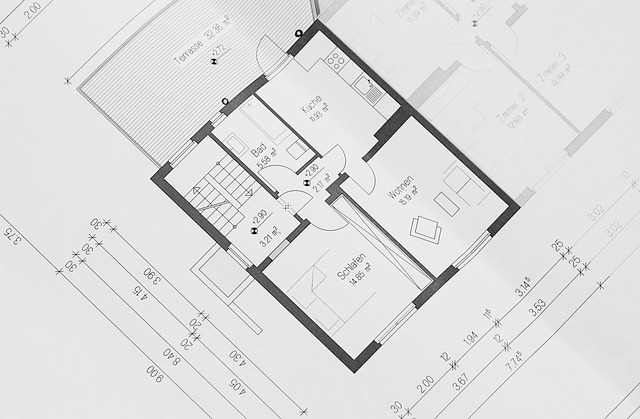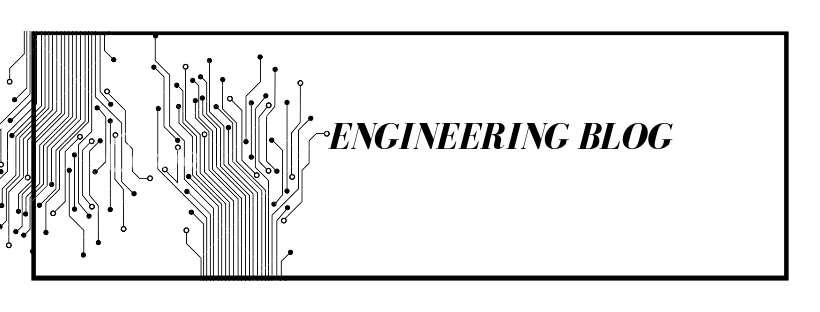
NEMA 3R vs. NEMA 12 Electrical Enclosures
There are times when customers or companies are having a hard time choosing electrical enclosures for their engineering project. Whether they will consider buying an enclosure applicable to both indoor or outdoor use, they have to carefully consider all the factors. There are engineering projects that only requires indoor electrical enclosures like the NEMA 12, or if they want to use the enclosure for both uses they can opt for NEMA 3R. One of the key elements in considering which enclosure to buy is the presence of harmful elements in the location where the enclosure will be used. Also, companies also consider if they need UV ray protection – but that’s for another topic. In this article, we will compare the NEMA 3R & NEMA 12 to help project engineers choose their electrical enclosure.
What is NEMA 3R Electrical Enclosures?
NEMA 3R electrical enclosures are being utilized for protecting & housing equipment used for power distribution, switch gear, lighting contractors or any equipment that needs protection from the elements present in an outdoor environment. NEMA 3R is resistant to water ingress, ice formation, and snow. NEMA 3R can adapt to both indoor and outdoor use and they can be manufactured from different types of material.
Main NEMA 3R Characteristics:
- It gives the using personnel protection form having incidental contact with the equipment housed inside the enclosure
- Gives solid ingress protection from falling dirt
- It has provision for drainage
- Gives water ingress protection from rain water
- It can have alternate locking mechanisms
- Has no protection form windblown dust unlike its predecessor NEMA 3.
What is NEMA 12 Electrical Enclosures?
NEMA 12 electrical enclosures are primarily manufactured for utilization of indoor engineering projects and is being used across industrial and manufacturing companies. It can also be used for certain machining applications. This type of electrical enclosure will give equipment solid ingress protection from dirt, dust, dripping non-corrosive liquids, floating dust, oil and lubricants. NEMA 12 can be manufactured from different types of steel or plastic material.
- Primarily manufactured for indoor use
- It gives protection from solid ingress caused by floating dust, falling dirt, fibers and lint floating in the air
- Gives water ingress protection caused by dripping water and other non-flammable & non-corrosive liquids
- It has doors with oil-resistant gaskets
- It is readily available with pre-punched holes, latches or locks, hinges, insulation, and cutouts
| COMPARISON TABLE | NEMA 3R | NEMA 12 |
| Indoor Use | √ | √ |
| Outdoor Use | √ | |
| Light water ingress protection (from dripping water or non-corrosive liquids) | √ | √ |
| Foreign solid object ingress protection (including non-hazardous objects) | √ | √ |
| External ice formation protection | √ | |
| Corrosion Protection | ||
| Protection from rain, sleet, and snow formation |

What are the Best Choices for Your Handheld Electronics Application?
Now that the summer season is fast approaching, I have started to notice the several pieces of summer clothing line starting to populate my favorite stores. Men’s, Women’s, Kid’s, Toddler’s: all pieces are showcasing the standard pieces for this season. Bikinis, shorts, summer trunks, etc. Yes, trends continue to repeat year after year but there is always this latest yet updated style to these wonderful pieces.
For example, the infamous summer shorts now has multiple pockets and it also comes with different loops. The bikini line has added some fashionable twists unto it and you can wear it under a beautiful translucent cardigan. These classic pieces can be worn by anyone even if there are new released piece of clothing available in the market.
Now let’s talk about electronics enclosures, shall we?
Like the recent update to our summer wardrobe, there are companies now who has just released a new handheld enclosure in a from of key fold enclosure. The small size is now comparable to the popular key fobs available in the market today. This new enclosure has more space inside and it sports a very modern look. There are now also battery holders inside. The companies that has released an old version of this product is still in compatible with the newly released key fob enclosures.
The companies are now releasing new products and these products comes with the extra functionality. The tactile buttons installed on the enclosure allows the PCB for better user feedback, which in return gives you the opportunity to properly design some more user-friendly functions. In addition to this, they have utilized more durable materials that can give you the best product there is in the market.
In addition to this information as well as the functions, the new key fob enclosure design available in the market today also has a new sleek design and it is widely available in either black or bright white. It also comes with the matte black buttons which is super amazing! One of the options available for this is on all of the 0,1,2,4,5 button designs. The companies now have started a new trend for the key fob enclosure design and that is one way to keeping the end-project in fashion a very good one.
Key fob enclosures has a versatility of functions. And because the need for keyless access is now increasing, companies should think of a way how they can do this more efficiently and effectively. This is also the very reason why they should think of various ways how they can improve the current model and design by releasing new designs and making it from new and durable materials. If you want to find the perfect handheld enclosure, you can search the Google for companies who are good in making these small enclosures and give them your design and inquire if they can meet your expectations.

How to Determine and Pinpoint the Exact Dimensions for Plastic Electronics Enclosures?
We recently just moved and re-arranged the furniture in our living room. My dog’s own crate has always been placed in the corner of our living room. Along wit some of our new furniture, there was no longer a room available for my dog’s crate. So we have to identify or look for another space for the crate. Since my dog is a medium sized Labrador, the crate is super huge.
To be able to move this into a new space or location, we have to run our creativity. We have to find a space spacious enough to fit the crate so that it can crate up and be installed on the wall. This in return, reminded me of the video game, Tetries.
I was being reminded of this fact while I was talking with a customer just the other day. The customers often call to our company because they want to ask for help in selecting the right enclosure. This person was particularly looking for a “a CD ROM sized enclosure”. When I told the customer that I would be more than happy to find something similar to that size range, the customer told me that it is just what he exactly needs as per dimension wise.
The customer then was really hoping to produce a product that would be able to slide into the same area like the optional CD ROM available in the computer. In order to fit that exact space, the customer need the right dimensions. This is too large and it would not eventually fit, and too small that it will not hold very stable.
As we have recently discovered, this problem presents several difficulties on a very few levels. While the majority of the manufacturing companies will shape the enclosures with several type of ranges to be able to offer the best choice available to the customers. However, it is nearly impossible to be able to find the exact match for the dimensions within a different product line.
There are companies that offers wide range of sizes and different styles of electronic enclosures. Several of their enclosures are mostly rectangular in shape, but majority of them have the same ratio of length that ranges form width to height. We just recently found out that the most used size range is 2 x 3 inches, and in line with this there are several options that exists within the 1/2” range. While each of them consist of a very deffierent depth.
This is to be able to give you the best and with the most options possible to help in finding out the most perfect enclosure for the companies’ needs.
Different Types of Enclosure Seals and Gaskets

Gaskets are necessary enclosure accessory to help seal the electrical enclosures according to the set of standards published by National Electrical Manufacturer’s Association (NEMA). The gaskets can be used from ratings 1 to 12. Some of the most popular ratings for indoor enclosures are 12 and 13. The common enclosures for outdoor application are 3, 4, 4x, 6, and 6P.
The electrical enclosure standards are very crucial because they have direct effect on safety and protection. It can also help the customer choose and obtain the right product for their company or business needs.
With this in mind, the good gasket design in an enclosure is very crucial for the engineer to make a very good seal and it is as important as the gasketing material itself. The design will bring a good impact on the functionality, aesthetics, and the overall performance.
Some of the common gasket types are:
Stripping – these gaskets are being supplied in rolls with a material slit to be able to determine the width that can be cut or separated in length by using the assembler. The low scrap-rate makes the stripping of the gasket cost-efficient. Despite of this, the corner seams of the material roll may make the system more susceptible to wear and leakage. This will only happen if the gasket is not properly designed or even assembled.
Die-cut – Once the material is cut using a steel-rule die, water-jet, or laser, the die cutting process helps in eliminating the corner seams of the material roll. Die-cut gaskets are very popular and common once the complexity of the design does not allow for the stripping or if the overall size of the gasket will not bring in larger center scrap. This can be lessened by designing a “fold-out” gasket.
Form-In Place – when it comes to dispensing the component, an elastomer is applied in liquid form and it is directly applied on the enclosure. The elastomer liquid then forms into a foam and it cures at room temperature. The form in place is usually is cheap to apply and it yields the most benefits once the gasket design becomes very complexed. Or else it will result to an important yield loss without the die-cut shape.Bulb Extrusions – this process can be tailor-fitted or designed specifically for abrasion and/or possible environmental resistance by utilizing very durable and high quality elastomers. The hollow center gives provision and allowance for compressibility as the material can be naturally firm or steady. The skinned surface of the gasket on all sides combined with high density minimizes and decreases any possible water ingress on the enclosure.
